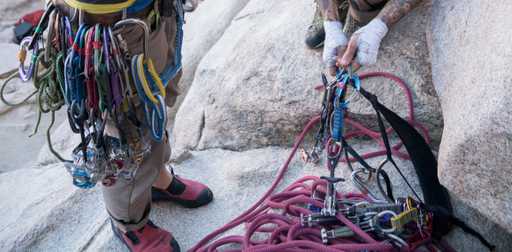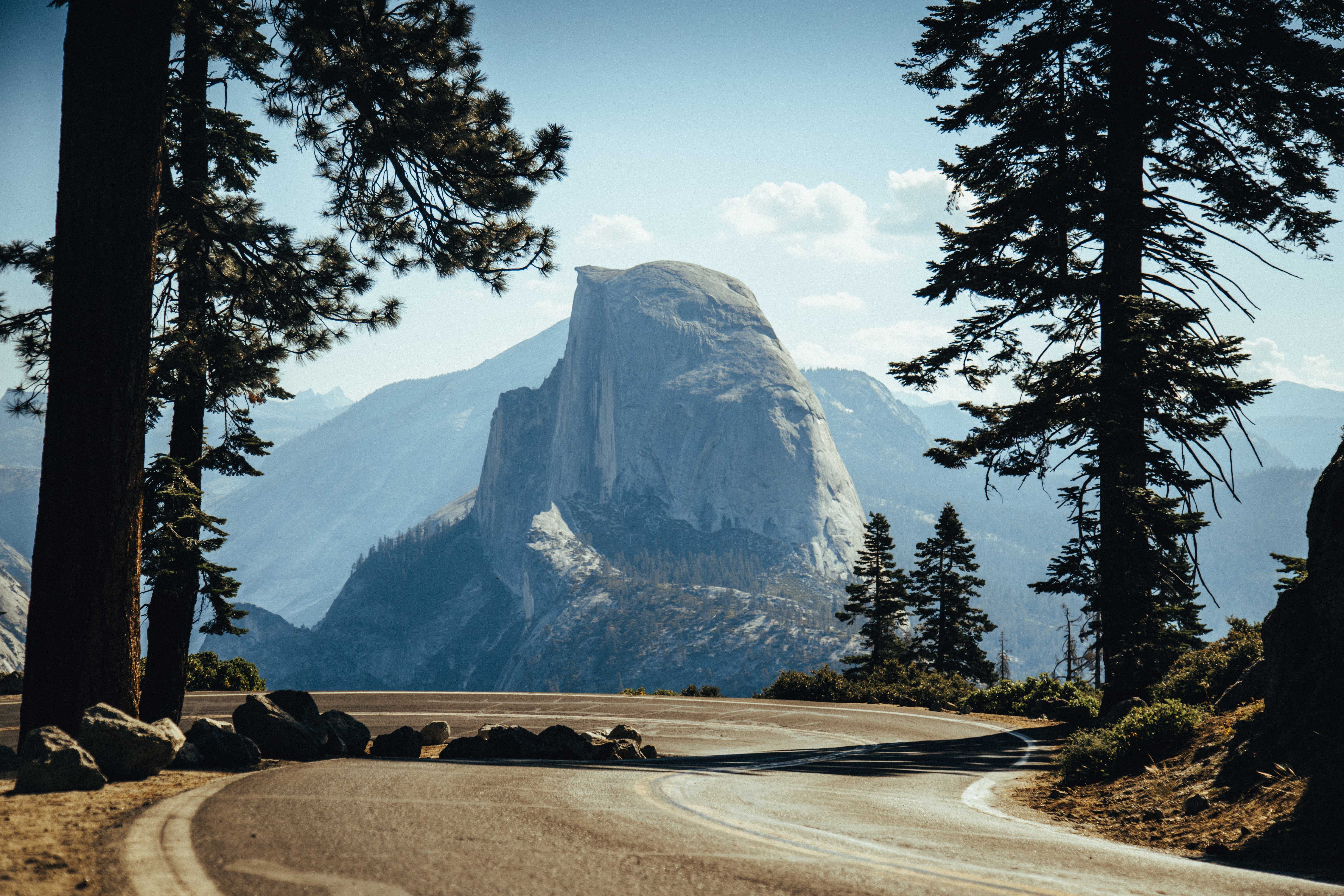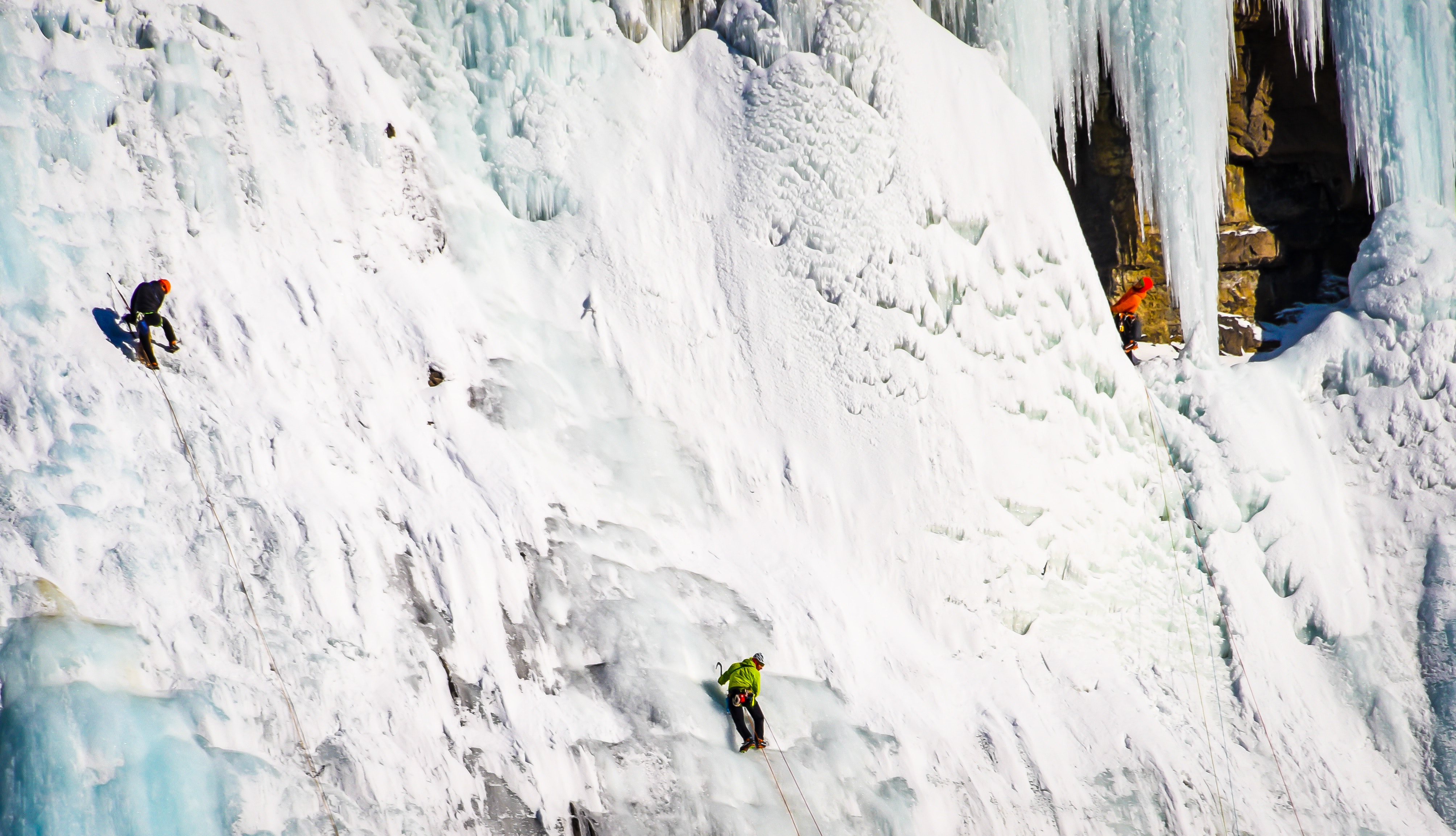Do you always do the same type of climbing?
If so, maybe it’s time to branch out and test yourself on one of the many other types of climbing available.
We've created the ultimate guide to the different types of climbing, covering 12 different styles, to help you understand what your buddy means when they talk about their new "deep water soloing project" and how that's different from Tommy Caldwell's latest big wall testpiece.
Recently, the climbing community has expanded rapidly, with hundreds of thousands of new people learning the ropes each year at climbing gyms and crags around the world.
While climbing is certainly becoming more and more popular, there are still plenty of people out there who think that Alex Honnold-esque free soloing is the only type of climbing.
Contrary to popular belief, however, climbing up El Cap without a rope is not how the vast majority of climbers like to spend their time on the rock.
In fact, there are so many different varieties of climbing, many seasoned climbing vets don’t even understand the nuances between the many climbing disciplines.
12 Types of Climbing
- Traditional Climbing
- Sport Climbing
- Bouldering
- Top Rope Climbing
- Aid Climbing
- Big Wall Climbing
- Ice Climbing
- Alpine Climbing
- Mixed Climbing and Dry Tooling
- Free Soloing
- Deep Water Soloing
- Speed Climbing
1. Traditional Climbing
Traditional, or trad climbing, as it’s affectionately known, is essentially the original kind of climbing.
Part adventure, part sport, a trad climber places and removes all of the gear that they need to protect themselves on the rock.
Traditional climbing protection generally involves gear such as cams (spring-loaded camming devices, or SLCDs), nuts/chocks, hexes, and tricams, which a climber must place into cracks and other features in the rock to protect themselves in the event of a fall.
Traditional climbing is often thought of as an environmentally ethical form of climbing because trad climbers try not to leave any gear behind in the rock.
But, it’s important to note that the first trad climbers left behind innumerable pieces of “fixed” protection, such as pitons, which were placed while climbing but not removed.
These days, most trad climbers adhere to the “clean climbing” ethics espoused by Patagonia founder Yvon Chouinard and climbing great Royal Robbins, which means that protection is removed from the rock wherever possible.
Many climbers view trad as the ultimate kind of climbing because the trad climber must be wholly self-sufficient on a route and cannot rely on pre-placed anchors or gear to protect them.
Essentially, this self-sufficiency is what differentiates trad climbing from other disciplines, like sport climbing.
While traditional climbs can be found at roadside crags, they are often found in remote locales, far in the backcountry, where adventure prevails on big mountain peaks.
2. Sport Climbing
Unlike trad climbing, where a climber must place their own protection, sport climbing takes place on pre-bolted crags where the focus is more on the physicality of the climb than on self-sufficiency.
Generally speaking, a sport climber starts at the bottom of a route equipped with little more than a rope, harness, and quickdraws.
As they move up the wall, they clip into fixed protection, usually bolts, which are somewhat evenly spaced to protect the climber throughout the route.
Sport climbing is incredibly popular because it requires significantly less gear than traditional climbing, which makes it more accessible to the general public.
Instead of having to buy a full rack of cams and nuts, a sport climber can outfit themselves with a dozen or so quickdraws and be all set.
Additionally, while traditional climbing, by its very nature, must occur outside on real rock, sport climbing routes are often found at indoor climbing gyms, where new and seasoned climbers alike can hone their skills on a regular basis.
Sport climbing routes, both indoors and outdoors, often require significant strength and gymnastics-esque flexibility, particularly in the harder grades.
3. Bouldering
Bouldering is pretty much what it sounds like - it’s a type of climbing that takes place on boulders, rather than on crags or cliffs.
Many climbers believe bouldering is the “purest” form of the sport as anyone with shoes can jump onto a boulder “problem” without the need for belayers and protection.
This also means it’s a great place for people to start climbing as it needs very little gear or expertise. We covered the rock climbing essentials in one of our earlier articles.
The world of climbing can be split up into roped and unroped disciplines.
Unlike trad and sport climbing, boulderers eschew the use of a rope, relying solely on proper falling technique, spotters, and the use of mattress-like cushions, aptly known as “crash pads” to protect them from the ground.
In bouldering, every falling climber hits the ground.
While this may sound overly dangerous to the uninitiated, it’s important to keep in mind that nearly all boulder problems are no more than 7-8 meters (22-26 feet) tall, so most bad falls generally result in little more than a sprained or broken ankle.
The boldest among us, however, will test their mettle against “highball” boulder problems which can be upwards of 10 meters (32 feet) tall!
In 2017 Nina Williams sent the Bishop highball Ambrosia, a modest 50 ft, V11
4. Top Rope Climbing
If you’re new to climbing, chances are you’ll start your life in the vertical world on a top rope climb. When top roping, the climbing rope is attached to an “anchor” at the top of the climb, which is designed to catch a climber’s fall, should they slip.
This is different from lead climbing, wherein the lead climber starts with the rope at the bottom of a route and clips it into protection as they move upwards.
Top roping is significantly less risky than leading because any falls that may happen are usually small and unlikely to cause serious injury when caught by a properly trained belayer.
Lead climbing falls, on the other hand, can be very violent, particularly on poorly protected routes with lots of ledges.
Many climbers learn the ropes (literally) while top roping, either at a gym or outside until they feel confident enough in their skills to learn to lead.
Top roping is also a great way to practice a particular move on a difficult climb or to try climbs that would be too difficult for one to lead, all without the risks of lead climbing.
5. Aid Climbing
Aid climbing involves the use of gear to propel a climber up a route.
Unlike “free” climbing, where a climber relies only on their own skill to move up a route - with gear placed solely for protection - while climbing, a climber will pull on or step on gear to move up the wall.
Aid climbing tends to be quite gear intensive, as the climber needs to place gear both to protect themselves in the event of a fall and to use to make upward progress.
A modern aid climber will often place “clean” climbing gear, like cams and nuts, for protection and aid, but can also use “fixed” gear like pitons or bolts, which are let in the rock.
Although most aid climbing is associated with long routes that can take multiple days to complete, any route can turn into an aid climb if the climber uses gear to get up the climb.
For the most part, however, aid climbing involves slowly moving up a climb while hanging on, pulling on, and stepping on gear.
6. Big Wall Climbing
The main difference between big wall climbing and all other types of climbing is that big wall climbers ascend cliffs that are many hundreds, if not thousands, of meters tall, which can take days or weeks to climb, while most other climbers stick to single or half-day objectives.
Big wall climbs are inherently “multi-pitch” routes, which means that they are more than a single rope length long.
While not all multi-pitch routes are big wall routes, big wall climbs tend to be dozens of pitches long and take a number of days to complete.
Some of the most famous big wall climbs are found in Yosemite National Park, where climbers flock to from around the world to test their skills against the behemoths of El Cap and Half Dome.
Big wall climbs are often done as aid climbing routes because of their difficulty, but elite climbers sometimes task themselves with free climbing these routes.
Tommy Caldwell and Alex Honnold recently set a jaw-dropping speed record for climbing the Nose, a classic Yosemite test piece, covering approximately 3000 feet in only 1:58:07!
This means that they ascend hundreds, if not thousands, of meters all under their own strength.
This type of climbing is very gear-intensive because climbers must carry all of the gear necessary to physically climb the route, in addition to gear for sleeping, eating, and living on the wall.
Many climbers train for months or years for a particular objective on a big wall, whether that be to put up a new climb or to climb a classic route.
7. Ice Climbing
Ice climbing is a type of climbing where a climber ascends ice using specialized pieces of gear, which allows them to make upward progress on an otherwise slippery surface.
Using ice tools, crampons, and ice screws, ice climbers can make their way up frozen waterfalls and frozen cliffs during the winter months.
For many climbers, ice climbing is just a great way to stay in shape for rock climbing during the colder months of the year, but for others, it’s their preferred activity.
Although ice climbing in most locations is constrained to the winter months, at higher elevations and in the mountains, proper ice climbing conditions can be found year round.
Rjukan is something of an ice climbing mecca for European based climbers, renowned for it’s easily accessible, high-quality ice lines.
8. Alpine Climbing
Alpine climbing is a sort of catch-all name for climbing that happens in remote, higher elevation locations.
Generally speaking, alpine climbs involve a significant approach, or hike, into the mountains and many of these climbs tend to be quite committing.
Every climb is different, but many of them involve some measure of rock climbing, ice climbing, or general mountaineering.
Moreover, unlike a traditional mountaineering expedition, where multiple camps are set up as climbers make their way up a major summit, alpine climbs tend to be done in a “light and fast” style with minimal external support.
Some famous alpine climbing areas, like the Bugaboos of British Columbia, Canada, involve long periods of glacier travel on the approach or descent from a significant multi-pitch rock climb, while other places, like the French Alps, often require a mix of rock and snow climbing skills.
If this sounds up your street, you should check out our article on planning your first alpine climb.
9. Mixed Climbing and Dry Tooling
Mixed climbing and dry tooling are the little-known step-siblings of the ice climbing world.
For the most part, the equipment used in both mixed and ice climbing is the same, the only difference is that mixed climbers climb on both rock and ice.
The best way to think of mixed climbing (also known as dry tooling if no ice is involved) is to consider it a hybrid discipline.
Climbers don ice climbing gear but will climb routes that fall somewhere between a rock climb and an ice climb.
Using ice tools and crampons, a climber will make their way up a route, clipping into bolts, ice screws, or even trad gear to protect themselves.
Mixed climbing and dry tooling routes tend to bring much of the gymnastic element found in sport climbing or bouldering into the ice climbing world.
While some ice climbers venture into the mixed climbing or dry tooling worlds to develop their physical abilities, there are many mixed climbers that focus solely on pushing the limits within the discipline.
This type of climbing can cause serious disagreements between climbers, due to the potential ethical and environmental impact. Ryan Nelson wrote an excellent piece exploring this.
10. Free Soloing
Thanks to the global media of the digital age, when the general public thinks of rock climbing, they often picture a scraggly climber ascending a huge cliff with nothing but shoes and a chalk bag.
This type of climbing, known as free soloing, is practised by climbers who forgo protective equipment of any sort while on a route.
Free soloing is similar to bouldering, as no ropes are used in either discipline, but in soloing, one climbs much higher than they would while bouldering.
Thus, a fall during a solo would likely be fatal, or, at the very least, cause some serious injury.
We placed the film Free Solo in our top ten climbing movies of all time, the first feature-length movie chronicling Alex Honnold’s solo ascent of El Capitan in 2018.
Contrary to what the media would have the general public think, however, free soloing is not terribly common.
Very few climbers ever partake in free soloing, and those that do generally “solo” well within their physical limits.
For many climbers, free soloing is as much about the mental and emotional experience of being truly alone on the rock as it is about the climbing itself.
11. Deep Water Soloing
Deep water soloing (also known as psicobloc) combines the beauty of moving naturally over rock without cumbersome gear with stunning seascapes.
Deep water soloists seek out stunning cliffs that overhang lakes and calm bays where they can climb and push their physical limits without a rope.
Deep water soloing tends to take place on high difficulty routes where falls are likely.
There’s even a Psicobloc Master competition, which took place in Utah in 2018.
In these instances, the water at the base of the climb acts as a sort of safety net for the climber to fall into with minimal risk of serious injury.
As the climber falls, they need only be aware of how they enter the water, especially from great heights, to avoid getting hurt from the impact. For the most part, however, falling off of a deep water solo is a refreshing way to cool off on a hot summer’s day.
12. Speed Climbing
Speed climbing is a climbing discipline that’s generally found within the world of climbing competitions. As one might imagine, in speed climbing, speed is the ultimate priority.
During speed climbing competitions, all climbers race up a given route on an artificial climbing wall, trying to nab first place with the fastest time.
While there is no set difficulty for the route, most people who can climb at least 5c (5.10a) wouldn’t have much of a problem on a speed route.
Plus, all of the plastic holds on speed climbing routes are the same combination of a jug, pinch, and sloper, so it’s all about which part of the hold you grab.
Speed climbing competitions and rules are regulated by the International Federation of Sport Climbing (IFSC), which oversees all events.
Despite being a part of some indoor climbing competitions, speed climbing is a very niche climbing discipline and is not widely practised.
Nevertheless, in 2016, the International Olympic Committee (IOC) approved rock climbing as a sport for the 2020 Tokyo Olympics.
To win gold at the games, climbers must compete in three disciplines: sport climbing, bouldering, and - you guessed it - speed climbing.
Conclusion
The world of climbing is incredibly diverse.
From speed climbing to dry tooling, each climbing discipline brings its own challenges and joys.
Although many people picture a sport climber or free soloist when the think of climbing, it turns out that there are many ways to enjoy life in the vertical world.
So which is your favourite discipline? And which one are you just itching to try?
Let us know in the comment below.




